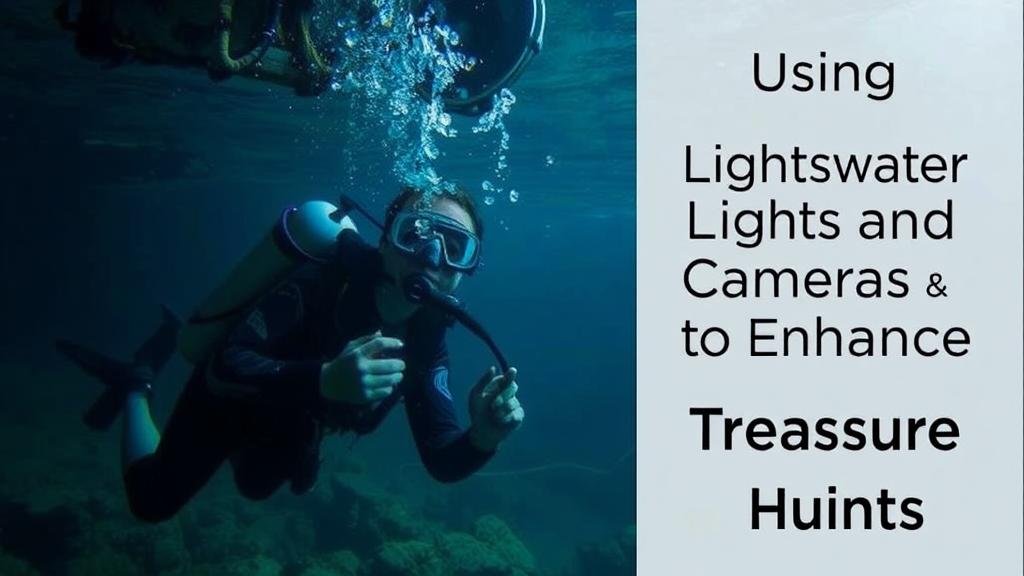Using Underwater Lights and Cameras to Enhance Treasure Hunts
Using Underwater Lights and Cameras to Enhance Treasure Hunts
Treasure hunting is a fascinating pursuit that has captivated adventurers for centuries. The search for lost relics and precious artifacts has evolved significantly with advancements in technology. Among these innovations, underwater lights and cameras have emerged as invaluable tools that enhance both the efficiency and enjoyment of treasure hunts conducted in marine environments. In this article, we will explore how these technologies work, their benefits, and real-world applications in treasure hunting.
The Role of Underwater Lights
Underwater lights serve a critical purpose during treasure hunting expeditions. They illuminate dark underwater environments, allowing treasure hunters to see more clearly in conditions where natural light does not penetrate effectively. This capability is vital in deeper waters and at night when visibility is severely restricted.
- Enhanced Visibility: Underwater lights can significantly boost visibility. For example, high-powered LED lights are capable of illuminating an area up to 100 feet, making it easier to spot buried artifacts or submerged structures.
- Attracting Marine Life: Certain types of underwater lights attract marine life, which can sometimes lead treasure hunters to valuable artifacts. Lost fishing gear, for example, often attracts curious fish that can signal nearby findable items.
Benefits of Underwater Cameras
Underwater cameras are indispensable for modern treasure hunting. They capture high-resolution images and videos of underwater environments, providing treasure hunters with an opportunity to survey areas before diving. Here are some of their principal benefits:
- Real-time Monitoring: Underwater cameras enable hunters to observe their surroundings in real-time. For example, using a remotely operated underwater vehicle (ROV) equipped with a camera allows for thorough exploration of shipwreck sites without the divers needing to be present immediately.
- Data Collection: High-definition video recordings can be reviewed after a dive, providing treasure hunters with critical information on what to focus on during their next dives. Studies have indicated that video capture improves artifact identification rates by up to 30%.
Case Studies: Successful Treasure Hunts
Several notable treasure hunts highlight the effective use of underwater lights and cameras:
- The Atocha Recovery: The famous shipwrecked Spanish galleon Nuestra Señora de Atocha was discovered in 1985 using advanced sonar technology and underwater cameras. divers used powerful underwater lights to illuminate dark areas of the seabed, resulting in finding over $400 million in gold and silver.
- Blackbeards Queen Annes Revenge: The wreck of Blackbeard’s ship employed underwater cameras with bright LED illumination to document artifacts and structural remains. This approach helped archaeologists recover thousands of items while preserving the site for future studies.
Cost-Effectiveness of Technologies
While the initial investment for underwater lights and cameras may seem high, they prove to be cost-effective when considering the potential for discovery. For example:
- The average professional underwater camera system can range from $1,000 to $10,000, but historically, the recovery of a single artifact can outweigh this cost, especially when recovering items with significant historical value.
- Underwater lighting systems can be as affordable as $200 for basic models, creating accessible options for hobbyists and professionals alike.
Addressing Concerns: Safety and Environmental Impact
Safety is a paramount concern when using these technologies. Ensuring that divers are trained and that equipment is regularly maintained can mitigate risks. The potential impact on marine environments must also be considered:
- Lights can affect nocturnal marine activities. Using lights responsibly means avoiding overly bright or intrusive lighting that can disrupt local ecosystems.
- Camera systems should be designed with sustainability in mind, ensuring they do not pollute the underwater environment with batteries or waste material.
Conclusion: Enhancing Treasure Hunts with Technology
The integration of underwater lights and cameras into treasure hunting practices marks a new era of exploration, making the pursuit not only more effective but safer as well. As technology continues to evolve, treasure hunters who prioritize these tools will find themselves at a significant advantage. The excitement of discovering lost treasures may now blend seamlessly with the reliability of state-of-the-art technology, enriching both the treasure-hunting experience and its outcomes.
Actionable Takeaway: For those interested in treasure hunting, investing in quality underwater lighting and camera systems can enhance visibility, improve artifact documentation, and increase the chances of successful discoveries, turning every adventure into a potentially valuable experience.


